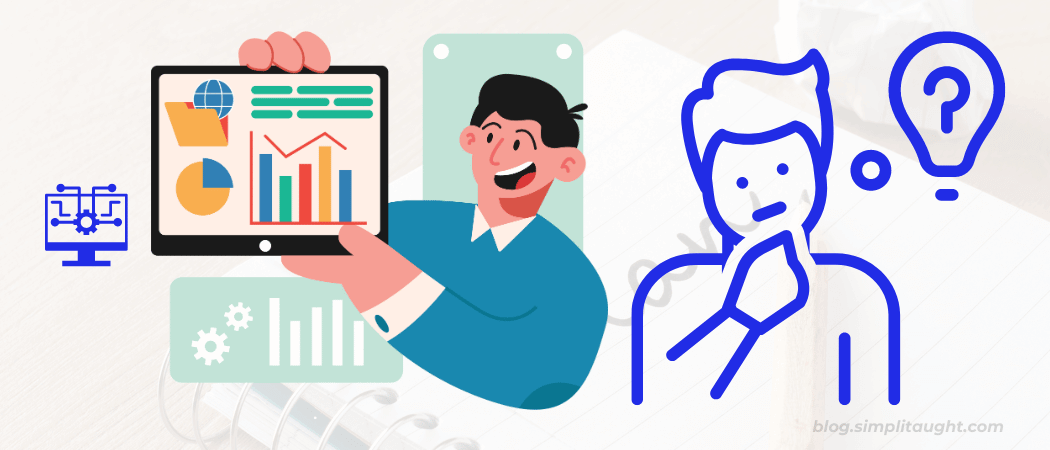Personalized learning includes the customization and adaptation of educational techniques and methods to suit the learning needs of each student, having their own unique styles, backgrounds, needs, and previous experiences.
To make such learning experiences happen, you need a solid personalized learning plan because education can occur in a myriad of ways, places, methods, activities, and time frames.
From densely populated lecture halls to one-on-one mentorship programs, from complex technical textbooks to interactive online games, learning can take so many different forms.
There are several learning techniques and many learning and teaching styles, all of which combine to create a personalized and different learning experience. Each learning type has its advantages and disadvantages and will provide distinct experiences to diverse learners.
A personalized learning plan caters to learners’ experiences, habits, and knowledge. It connects them to learning methods to learn faster, comprehend newer concepts quickly, and enhance their learning performance.
How To Develop A Personalized Learning Plan?
To properly harness the power of this form of instruction, you need a personalized learning plan.
A personalized learning plan is a document with short and long-term goals of a student, covering their strengths, weaknesses, abilities, and knowledge gaps. It etches out a program that is best for that particular student. Alternatively, it is a roadmap a student will follow to reach their training and educational goals.
Assess
A personalized learning plan always starts with an evaluation. To know where you are heading with such plans, you must know where you are starting from!
You can develop assessments for specific subjects for each student. Then, you can assess them on what information they should know and at what level and be able to recognize particular knowledge gaps.
Once the student has completed their assessment, you can input this data into the system to develop a personalized learning plan for them.
Such evaluations highlight the strengths and weaknesses of students and can help you understand where they might need additional support.
Determine The Skills & Academic Goals of Each Student
Based on the assessments of each learner, the next step after starting on a plan is where you are headed with this.
You need to identify the specific skills required of each student to complete the course and the academic goals they will achieve at the end of the semester.
By doing so, an institution can create or modify learning materials to develop or improve the skill set of learners.
Create A Learning Plan
When you have gathered data on learners’ current knowledge and skills and identified what they need to learn, the next step is to develop a path to get them there. Therefore, you should start developing a learning plan.
It does not have to be hyper-specific. You just have to develop generic series of steps that learners should follow from point A to point B and gather data as more learners use this path to help personalize it for future students.
Map Learning Modalities
Working on how each learner interacts with learning material and which resources will work best for this particular learner is an essential aspect of personalized learning.
Do they prefer video content? Or are they more comfortable working with mini-quizzes and text?
Each individual will have preferences on how they want to engage with the learning content, and you will discover it at this step.
As you discover what works best for your students, you should map this information. It is vital to create learner profiles. These profiles will not only demonstrate the path of each student and their accomplishments but can also serve as a blueprint for other learners having similar knowledge and abilities.
Understanding how each student achieves their academic goals is valuable data to design courses for future learners.
Adapt Learning Plans To Individual Preferences
Educational institutions can ensure that students are engaged, obtaining skills, and not wasting their precious time on unnecessary content by customizing the learning environment, planning, and utilizing data about students’ specific knowledge levels, content preferences, and many other factors.
Use Assessments To Track Learning
You should implement recurring check-ins throughout evaluations to ensure a successful learning path.
These evaluations, one-on-one, and self, will then deliver data for analysis that will ultimately help give an insight into the learner’s journey.
One-on-one assessments are crucial here, as they provide feedback, goal restructuring, problem-solving, and many other positive actions that can assist learners in reaching their goals.
Data powers a personalized plan, and the more data there is, the more responsive it becomes.
Review And Scale
Throughout the course, the institution should review the process, tirelessly work to improve the overall learning experience, and ensure that the process itself is optimized. This is where an institution can update or scale a learning program.
Conclusion
Making learning personalized significantly impacts learning outcomes. When new ideas and concepts are linked to an individual’s previous experience, it results in better understanding and more efficient learning.
Also, using technologies like artificial intelligence and machine learning can help build personalized learning experiences in future educational activities. For example, the utilization of sophisticated search and personalized engines aids educators and institutions in creating a customized learning plan that adapts to the learning experience of students.






